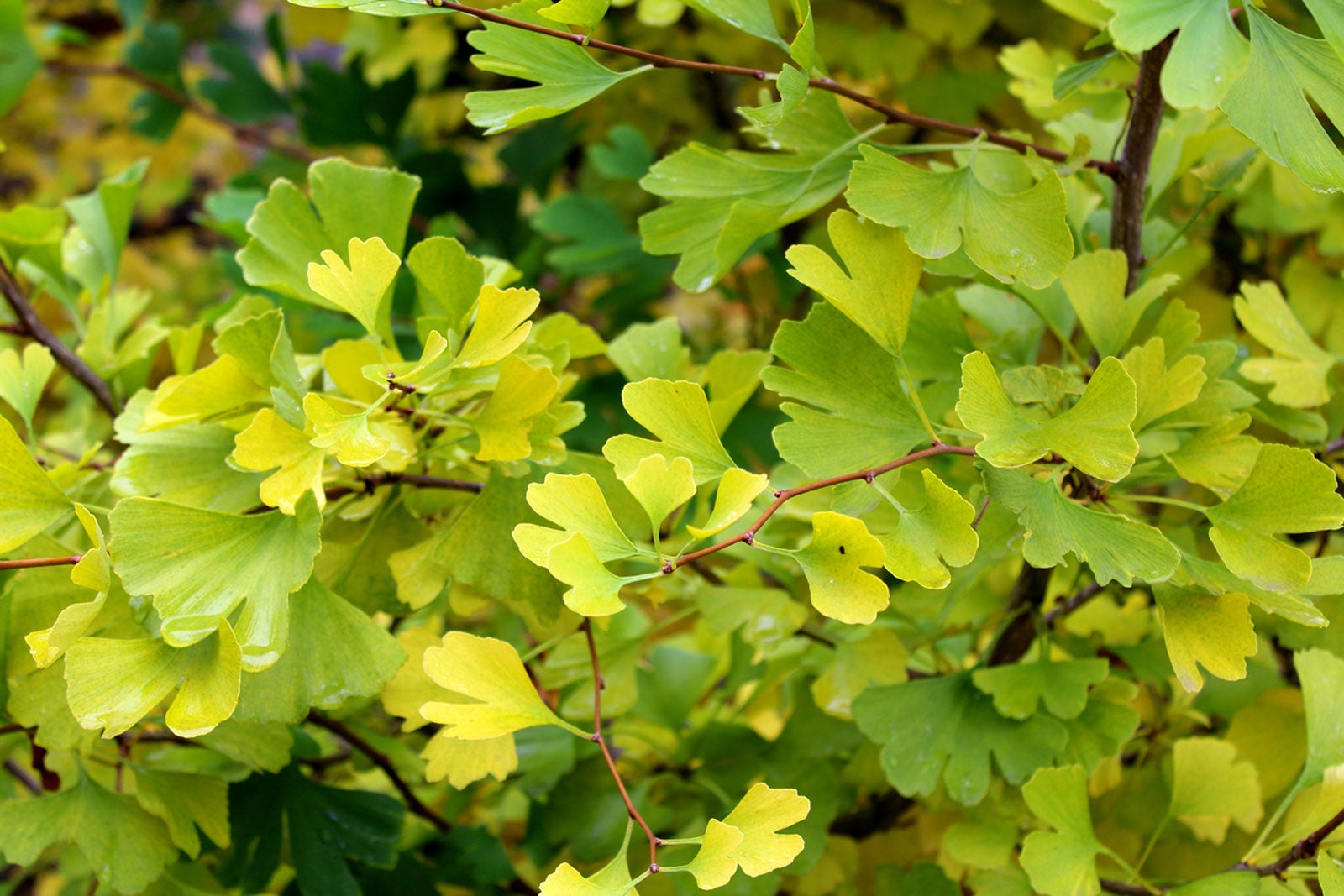How To Prune A Ginkgo – Tips For Trimming Ginkgo Trees


The ginkgo tree is one of the oldest plant species on the planet and is a desirable landscape tree for many reasons: it has a unique leaf shape, tolerates drought and urban locations, and is relatively low maintenance.
What about pruning though? When do you cut back ginkgo and do you need to at all? These ancient, living-fossil trees can benefit from some pruning when young, but once mature don’t need much trimming at all.
When Do You Cut Back Ginkgo?
The best time of year for ginkgo tree pruning is in the late fall, in the winter, or in early spring. The tree should be dormant when you trim it. This will give it a chance to heal from the cuts before it needs to put energy into growing and producing flowers and leaves.
The trees are naturally tall with rounded canopies so trimming ginkgo trees is generally unnecessary. The bulk of the pruning you will do for a ginkgo is while the tree is still young and establishing its shape. Once the tree is mature, the only trimming you need to do is to remove dead branches or weak or broken limbs.
How to Prune a Ginkgo
Young ginkgo trees benefit from an annual pruning during the dormant season. This will help it develop a nice shape and a solid, strong limb structure.
Before trimming ginkgo trees, be sure you understand the growth habit of the varieties. Each variety of gingko has its own natural contour. For instance, columnar trees grow up in a narrow, column-like shape. Other varieties grow out more and have a pyramidal or umbrella shape. This will help guide some of your cuts.
Ginkgo should have a single vertical leader, so trim out any branches that seem to be competing with the main trunk. You may also see suckers – small, upright stems, growing from the ground. You can trim these away.
Sign up for the Gardening Know How newsletter today and receive a free copy of our e-book "How to Grow Delicious Tomatoes".
To shape your tree additionally, trim branches where they meet the trunk. Remove branches that hang down too low and impede pedestrians or traffic. This will help you create a nice shade canopy for non-columnar varieties. Cut out any branches that look dead or weak. Also, remove a few strategic smaller branches to increase airflow throughout the canopy.
Once your ginkgo is taller than about 6 feet (2 m.), you can slow down regular pruning. It should maintain its shape at this point and will only need broken or dead branches removed going forward. When you prune, remove dead wood and dying branches with clean, sterilized cutting tools. Trim out any diseased branches as well. Never top a ginkgo or any other tree.

Mary Ellen Ellis has been gardening for over 20 years. With degrees in Chemistry and Biology, Mary Ellen's specialties are flowers, native plants, and herbs.